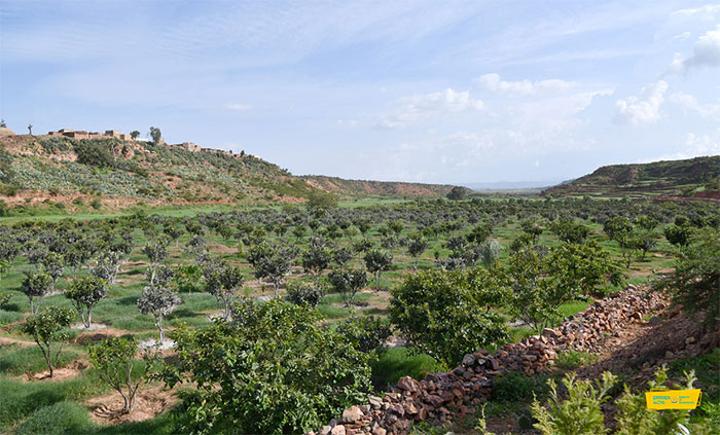Africa-Press – Eritrea. Fueled by climate change and the ever-increasing demands for water, the growing scarcity, and variability in water resources have made water conservation a top priority for countries. Although Eritrea is not blessed with abundant water resources, the availability of surface and groundwater has increased in recent years because of the government’s considerable efforts and investments.
Water conservation has gained priority in the development efforts undertaken by the government of Eritrea. In Eritrea, the rainfall tends to be torrential, unpredictable, and lasts a short season. The low amount of rain and the absence of rivers that flow throughout the year have made the construction of dams and other means of water conservation techniques a necessity in order to ensure sustainable water supply and food security.
Securing sufficient water is a basic requirement to improve productive economic activities. The small, medium, and big dams constructed in the three development zones of the country are expected to meet the country’s present and future needs of water. But as the construction of the dams alone does not meet the development needs of the nation, various development projects — such as farming, animal husbandry, fishing, solar power installation, and electrification of the villages surrounding the dams — are being carried out around the dams.
Although the purpose of the newly built dams is diverse, the development of agriculture is the major rationale for their construction. The water in dams gives farmers confidence to invest in agriculture and increase the productivity of farms.
For many years the main challenge facing the agriculture sector in Eritrea has been a shortage of water due to recurrent droughts and poor water conservation structures. Having realized this from the outset, the government of Eritrea has been implementing strategies to harness the seasonal water flows and direct them to where they are needed.
The objective is “to augment water storage capacity by constructing water reservoirs, small dams, diversion canals and wells, and new irrigation schemes”.
After a careful examination of the Millennium Development Goals, world leaders renewed their commitment by adopting the Sustainable Development Goals with the objective to end poverty and hunger by 2030. This ambitious project has 17 goals aiming at a future that is free from poverty and hunger. Eritrea is, quietly and without fanfare, engaged in implementing development projects to facilitate growth and empower its people. Concrete measures have been taken in laying the ground for equitable and sustainable development, and water is playing a pivotal role to end poverty in all its forms and achieve food security and improved nutrition by increasing agricultural productivity. Urbanization and industrialization are also closely interconnected with the availability of water. Water is a precious resource and a key driver of poverty reduction and sustainable growth.
The life of the majority of the Eritrean population is associated with farming, and poverty is concentrated in rural areas. Recognizing this and the importance of agriculture to reduce poverty, the Government has made vital interventions to enhance the productive capacity of farmers by launching water conservation projects. Therefore, the effectiveness of the poverty reduction strategy can be measured by what has been done in rural areas.
The various dams that are built across Eritrea are supplying water to many villages. Hundreds of thousands of people living in villages located around Mslam and Teqera dams are a case in point. There is no doubt that the numerous water conservation structures constructed by the government will transform the economic, social, and environmental conditions of Eritrea. They will boost the country’s performance in ensuring food security, providing health care and education, and overall balanced development.
The construction of dams in remote areas of Eritrea will help the country to address its socio-economic challenges. They will help prevent migration of people to the cities by giving them a higher standard of living in their native areas. As the construction of dams is accompanied by the mechanization of agriculture, the introduction of commercial crops, electrification of villages, and the provision of transportation and other social services, many villages are benefitting from the investment in and around the dams and many people are moving to settle in those locations. In short, the dams, which have been constructed and are under construction, are true manifestations of Eritrea’s development strategy guided by social justice and balanced development.







